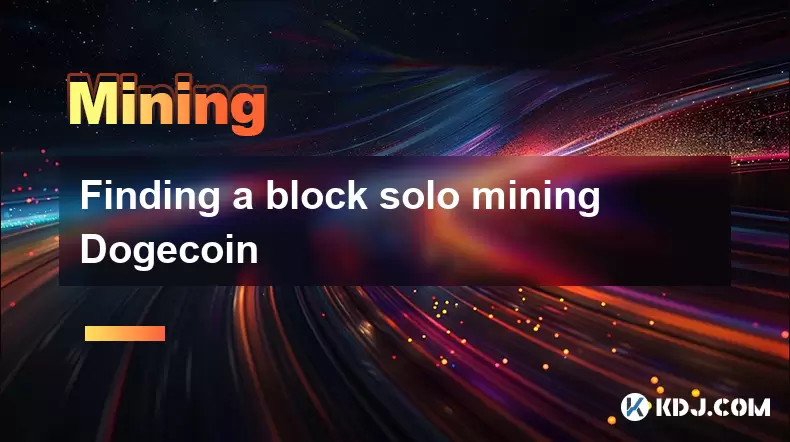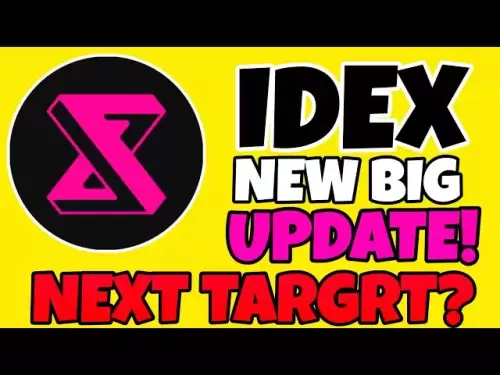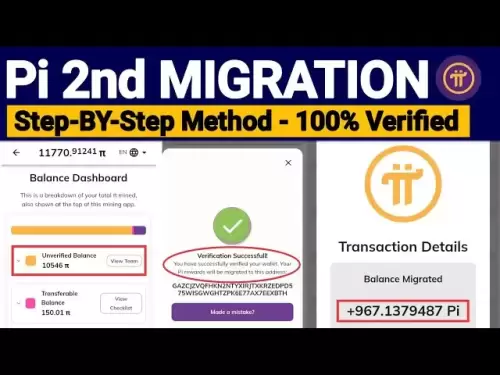-
 Bitcoin
Bitcoin $117,991.5647
-0.03% -
 Ethereum
Ethereum $2,966.4808
0.18% -
 XRP
XRP $2.8076
0.64% -
 Tether USDt
Tether USDt $1.0003
0.00% -
 BNB
BNB $689.9050
-0.63% -
 Solana
Solana $162.0407
-0.80% -
 USDC
USDC $0.9999
0.00% -
 Dogecoin
Dogecoin $0.1995
-1.51% -
 TRON
TRON $0.3001
-1.21% -
 Cardano
Cardano $0.7426
3.25% -
 Hyperliquid
Hyperliquid $47.7978
2.84% -
 Stellar
Stellar $0.4411
16.52% -
 Sui
Sui $3.4267
0.15% -
 Chainlink
Chainlink $15.3148
0.07% -
 Bitcoin Cash
Bitcoin Cash $506.5880
-1.91% -
 Hedera
Hedera $0.2222
12.41% -
 Avalanche
Avalanche $21.2049
1.67% -
 UNUS SED LEO
UNUS SED LEO $9.0606
-0.19% -
 Shiba Inu
Shiba Inu $0.0...01325
-0.86% -
 Toncoin
Toncoin $2.9979
0.32% -
 Litecoin
Litecoin $94.3717
1.13% -
 Polkadot
Polkadot $3.9873
-0.29% -
 Monero
Monero $336.1497
0.92% -
 Dai
Dai $0.9999
-0.01% -
 Uniswap
Uniswap $8.5189
-0.60% -
 Ethena USDe
Ethena USDe $1.0005
-0.04% -
 Pepe
Pepe $0.0...01236
-0.92% -
 Bitget Token
Bitget Token $4.4002
-0.23% -
 Aave
Aave $303.5433
1.05% -
 Bittensor
Bittensor $391.1314
-0.35%
Finding a block solo mining Dogecoin
Solo mining Dogecoin offers full block rewards but requires significant hashing power and patience due to high variance and difficulty.
Jul 13, 2025 at 07:36 pm

Understanding the Basics of Dogecoin Solo Mining
Dogecoin, originally created as a meme-based cryptocurrency, has gained significant traction in the crypto community. Solo mining refers to the process where an individual miner attempts to find and validate blocks without joining a mining pool. This means that all rewards from successfully mined blocks go directly to the miner. However, it also implies that the chances of finding a block are lower unless you have substantial hashing power.
Unlike pooled mining, where rewards are shared based on contribution, solo mining offers full reward potential but comes with higher variance and difficulty. To engage in solo mining Dogecoin, you need to understand how the Scrypt algorithm works, since Dogecoin uses this proof-of-work mechanism.
Setting Up Your Mining Hardware and Software
Before diving into the actual mining process, ensure your hardware is compatible. Dogecoin's Scrypt algorithm is GPU-friendly, although some ASICs can also be used. The most common approach involves using Graphics Processing Units (GPUs) such as NVIDIA or AMD cards.
Here’s what you’ll need:
- A powerful GPU
- A stable internet connection
- A wallet to receive mined DOGE
- Mining software like cpuminer-multi, ccminer, or sgminer
Install the appropriate drivers for your GPU. Then download a mining application that supports Scrypt and Dogecoin. Make sure to verify the integrity of the software before installation.
Configuring Your Wallet for Solo Mining
A crucial step in solo mining is setting up a Dogecoin wallet that will receive any mined coins. You can use the official Dogecoin Core wallet or other trusted alternatives like Electrum-Doge.
Download and install the wallet software. Once installed, allow it to sync with the Dogecoin blockchain—this may take several hours depending on your internet speed and system performance.
After synchronization, generate a receiving address within the wallet. This address will be used in your mining configuration file to direct any mined rewards to your wallet.
Connecting to a Solo Mining Node
To solo mine effectively, you must connect to a Dogecoin node. While you can run your own full node by running the Dogecoin Core wallet in server mode, many miners opt for third-party services like Mining-Daemon (minerd) or Stratum proxies designed for solo mining.
Configure your mining software with the following parameters:
-a scrypt— specifies the algorithm-o stratum+tcp://your.node.address:port— connects to the solo node-u your_wallet_address— directs rewards-p x— typically set to "x" for simplicity
Ensure that your firewall allows traffic through the specified port and that your mining software communicates properly with the node.
Troubleshooting Common Issues During Solo Mining
You might encounter issues during setup or while mining. Common problems include:
- Connection timeouts: Check if the node is online and your firewall isn’t blocking the port.
- Invalid shares: Ensure your wallet address is correctly entered and matches the format required by the node.
- Low hash rate: Monitor GPU temperatures and clock speeds; underperforming hardware may not contribute optimally.
- Wallet syncing issues: If your Dogecoin Core wallet fails to sync, consider using an SPV wallet temporarily or reindexing the blockchain.
Use logging features in your mining software to diagnose specific errors. Community forums and GitHub repositories often provide solutions to known bugs or compatibility issues.
Frequently Asked Questions About Dogecoin Solo Mining
Q: Can I solo mine Dogecoin with a CPU?
While technically possible, CPU mining is highly inefficient for Dogecoin due to the Scrypt algorithm's memory-intensive nature. GPUs offer significantly better performance and are recommended for serious mining efforts.
Q: How long does it take to find a block solo mining Dogecoin?
The time varies widely based on your hashrate and network difficulty. With low hashpower, it could take weeks or months to find a block. High-powered rigs with multiple GPUs increase your odds but still don’t guarantee consistent success.
Q: Is solo mining more profitable than pool mining?
Not necessarily. Solo mining offers full block rewards, but due to its high variance, it may not yield regular income. Pool mining provides steady payouts based on contributed work, making it more predictable for smaller miners.
Q: Do I need to keep my wallet open while solo mining?
Yes, your wallet must remain open and connected to receive mined blocks. If your wallet is closed when a block is found, the reward may be lost or delayed until the wallet resynchronizes with the network.
Disclaimer:info@kdj.com
The information provided is not trading advice. kdj.com does not assume any responsibility for any investments made based on the information provided in this article. Cryptocurrencies are highly volatile and it is highly recommended that you invest with caution after thorough research!
If you believe that the content used on this website infringes your copyright, please contact us immediately (info@kdj.com) and we will delete it promptly.
- Bitcoin's Weekend Breakout: All-Time Highs and What's Driving the Surge
- 2025-07-14 01:30:14
- Arctic Pablo Coin: The Meme Coin Investment That's Heating Up Crypto
- 2025-07-14 00:30:16
- Kate, Cancer, and Wimbledon: A Royal Display of Strength and Sportsmanship
- 2025-07-14 00:30:16
- Shiba Inu: Riding the 2025-26 Bull Cycle Wave?
- 2025-07-14 00:50:14
- Dogecoin and the Meme Coin Mania: Top 10 Contender or Just Hype?
- 2025-07-14 00:50:14
- Mutuum Finance, Bitcoin, and Stabilization: Decoding the Crypto Landscape
- 2025-07-14 01:30:14
Related knowledge

How are crypto mining profits taxed?
Jul 14,2025 at 12:28am
Understanding Cryptocurrency Mining and TaxationCryptocurrency mining involves validating transactions on a blockchain network and earning rewards in ...

How to keep a mining rig cool
Jul 12,2025 at 01:42pm
Understanding the Importance of Cooling in Mining RigsCryptocurrency mining is an intensive process that places heavy demand on hardware components, p...

How much does it cost to start crypto mining?
Jul 13,2025 at 12:22am
Understanding the Basic Costs of Crypto MiningStarting crypto mining involves several upfront and ongoing expenses. The primary costs include hardware...

What is the most profitable crypto to mine?
Jul 13,2025 at 07:00am
Understanding Mining Profitability in CryptocurrencyWhen evaluating the most profitable crypto to mine, it's essential to consider several factors tha...

What do I need to start mining crypto?
Jul 13,2025 at 12:28am
Understanding the Basics of Crypto MiningCrypto mining is the process by which transactions are verified and added to a blockchain, and new coins are ...

How does crypto mining work?
Jul 13,2025 at 11:01am
Understanding the Basics of Crypto MiningCrypto mining is the process through which new cryptocurrency coins are introduced into circulation and trans...

How are crypto mining profits taxed?
Jul 14,2025 at 12:28am
Understanding Cryptocurrency Mining and TaxationCryptocurrency mining involves validating transactions on a blockchain network and earning rewards in ...

How to keep a mining rig cool
Jul 12,2025 at 01:42pm
Understanding the Importance of Cooling in Mining RigsCryptocurrency mining is an intensive process that places heavy demand on hardware components, p...

How much does it cost to start crypto mining?
Jul 13,2025 at 12:22am
Understanding the Basic Costs of Crypto MiningStarting crypto mining involves several upfront and ongoing expenses. The primary costs include hardware...

What is the most profitable crypto to mine?
Jul 13,2025 at 07:00am
Understanding Mining Profitability in CryptocurrencyWhen evaluating the most profitable crypto to mine, it's essential to consider several factors tha...

What do I need to start mining crypto?
Jul 13,2025 at 12:28am
Understanding the Basics of Crypto MiningCrypto mining is the process by which transactions are verified and added to a blockchain, and new coins are ...

How does crypto mining work?
Jul 13,2025 at 11:01am
Understanding the Basics of Crypto MiningCrypto mining is the process through which new cryptocurrency coins are introduced into circulation and trans...
See all articles























































































